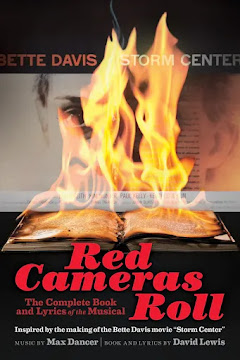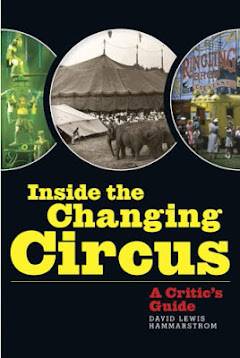Update 1.31.21 Lately, for those who read my blog, you will know I have been immersed in my favorite books in researching Ringling history. The subject is infinitely complex, deep, never ending, as witness this list. There were so many brothers and so many stories and so much drama. Two of them, one newly added to this last, I have reread.
To put their dominance in another perspective concerning American big top history: How many major books are there out there on Barnum & Bailey? On Adam Forepaugh? The Sells Bros? On the American Circus Corporation shows? On Polack Bros.? Circus Vargas? Even, to be inclusive, given there principle source of income in the USofA, Cirque du Soleil? How many?
The following post came out five years ago.
****************************************************************************
Circus books. What makes for a good read? Prose or scholarship? Please be aware, there are many books I have never read. I rarely buy books, but read them from the library, if they are available. These personal favorites are here primarily because they entertain me and I find them generally trustworthy. All doubtlessly contain errors. It's the bigger picture that counts.
Books that fail to make my list strike me as agenda-driven, giving undue or disproportionate attention to favored figures or to fringe groups or social and cultural "studies." Others come off as irresponsibly incomplete, such as Linda Simon's vividly-written The Greatest Shows on Earth: A History of the Circus, so exciting at the outset, so limp and empty at the end. Example? She completely ignores the entire Russian-Soviet circus scene -- a colossal blunder. And it suggests, the best reason I can come up with, a political bias against Communist countries (she also, as I recall, ignores China).
Yes, books about the Ringling juggernaut tend to dominate anybody's list, as they do mine, because that's the circus in this country that everybody wants to write -- or read -- about.
Be warned: "scholarship," no matter how many footnotes or end notes, is only as good as is the objectivity and honesty of the author in bringing it all to the table. Even then, any quoted "source" -- an interview, a passage from another book, press releases and program magazine materials -- may itself propound misinformation. Most troubling is the compromising writer who excludes knowledge in order to serve a preset narrative.
New to the list, an overlooked gem. In my recent Ringling research tear, I took it out and am re-reading it. Published in 1950, Harlow is absolutely wonderful in how he narrates the boys' circus dreams from the first kid show onto the Big Show. And it gives me renewed respect for how they learned to work together so well. I feel in greater awe of them than ever, how they merged so intelligently, allowing each other autonomy. Al was first and foremost the leader, but others, too, lead. Of course, Harlow must have drawn most of their early years from Alf. T. Ringling's 1900 tome, Life Story of the Ringling Brothers. I want to give it another read, full or selective.
My top of the list. I discovered Earl Chapin May's classic at a very young age. Loved the way it is written, the fast-moving parade of actors on the stage of circus history. I still refer back to the book, time and time again. May coined the phrase "the ever changing, never changing circus." Too bad the book came out in 1932, just before a war among Ringling heirs for control of the circus was about to be waged.
Barely in my teens, I found This Way to the Big Show (1936) high on a library shelf in Santa Rosa, took it down, checked it out, and was fascinated. Dexter Fellows, one of the most colorful circus press agents ever, flaked mostly for Buffalo Bill and later for Barnum & Bailey under the Ringlings, when Otto was at the helm. He paints a richly detailed account of how circuses operated, including a juicy chapter, The Customer is Always Wrong, on how con men worked suckers in so many clever ways. First rate coverage.
*Update 12.29.20 I have re-read parts of it again. This time, I was struck by Fellows' vivid account of his tense dealings with Otto Ringling, who rode press agents hard for all the free passes they fought for and gave out. It is eye-opening, for I had always thought of Otto as a dull bland sort of book-keeping genius. Here, he comes across as anything but, fully in command. And this ads to my respect and regard for the collective strength and power of those five remarkable bothers. Here, we see Otto up close, in a way no scholar looking back through secondary research could ever hope to capture. High recommended for Ringlingphiles.
Possibly the most entertaining circus page turner of all time. Its author, Connie Clausen, joined the Big Show as a "ballet broad," during the boom years of John Ringling North, who himself, so it is written, discovered Clausen on a Sarasota street in 1942, and talked her into joining the show. And what a tale she tells!
Famed Ringling equestrian director Fred Bradna, sharing memories and inside information with writer Hartzel Spence, offers a vibrant account of his life with the circus. The man who blew the whistle to keep three rings and four stages in constant motion, Bradna offers incisive critiques of the greatest ring stars.
Henry Ringling North, adoring brother of John, fashioned, with Alden Hatch, a warm and wonderful history of his Ringling family story. Like most books, not error free. Still, a major and generally trustworthy valentine to North's famed uncles.
Gene Plowden's cheerfully informative chronicle of the Ringling Bros. story contains a compelling subplot on John Ringling, most famous of the five brothers, who outlived them all, only in the end to rule recklessly and lose all of his power. A haunting tale of the arrogance of success in a world of dazzling risk takers forever on the brink of disaster How I wished that Plowden had made the life of John Ringling his central premise, for this is clearly where his heart was centered.
Reader beware: Like too many circus books, and that surely would include some put out by the academics (Linda Simon, mentioned above, is a college professor), Robert Lewis Taylor's captivating Center Ring, one of the most literate books ever penned about circus, is perhaps as much fiction as fact. Example: The song "Lovely Luawana Lady," as featured in the movie The Greatest Show on Earth, never became, as claimed in these well-paced pages, "nationally popular." Nonetheless, Center Ring's profiles of major Ringling players during the heady days of the John Ringling North era, which originally appeared in the New Yorker magazine, make for a deliciously good read.
Let us now cross the Big Pond to the land were circus was invented. Antony Hippisley Coxe's A Seat at the Circus is a must-read for fans of tradition-rooted artistry. The author, a proper English gentleman, shares with us in elegant fashion, his fastidious knowledge of the various ring acts, of what to look for and how to judge measurable achievement. He has little patience for the embellishing spectacle that marked American three ring big tops, and, before that, early British circus shows, too.
"As with horses, the elephants don't need to be oversold with gimmicks. Just walking into the ring and marching, stopping and turning to command would be enough." Given recent Ringling plans to retire its performing elephants, how brilliantly McPherson's suggestion resonates, now more than ever. Heck, I can actually, yes, see myself thrilling merely to a parade of pachyderms!
Ringmaster, by Kristopher Antekeier and Greg Aunapu is a bold rarity among circus books, offering a candid look behind the scenes during the Irvin and Kenneth Feld era – doubly amazing considering how shrewdly effective are the Felds in manipulating the media to buy their grandiose press kit fictions — from fans to willing authors. In these stark pages, fraught with depressing work conditions and low morale, the staring antagonist is Gunther Gebel Williams, who reveals a nasty controlling nature. For Antekeier, his first season goes from euphoria to disillusionment, and so, rather than re-sign for another tour, he walks away. And writes a remarkable book.
For all true Ringling fans, Jerry Apps offers a meticulously researched study of how the five brothers worked so well together to build arguably the most famous circus in the world. We follow them season by season. The book is particularly rich in correspondence between the brothers, illustrating how they planned new shows and scouted acts. Lushly illustrated, too. A serious center ring treat.
Fast, breezy, as light as a souffle out of the oven. Maybe I'm on the fence a bit, but this delightful sampler of Big Apple Circus history and lore comes from its founder and ringmaster, Paul Binder, who puts aside his scholarly bent to charm us with effervescent memories of life in and around New York's "own circus." It's a hit and miss affair, leaving out things I wished he had discussed, like his short-lived circus school. Maybe he will follow up with another book, let's hope. The Binder parade bounces and shines with brevity. And what a nice little one-ring charmer to end this post on.
first posted 4.15.15 World Circus Day is Coming, So Let's Talk Books




































3 comments:
Well... (momomentarily speechless) I'm humbled and honoured to be reading a list of such time-proven books and to stumble upon my own Circus Mania among them.
You're very welcome. I hope you survived the stumble. :-)
Slipped on a custard pie...
Post a Comment